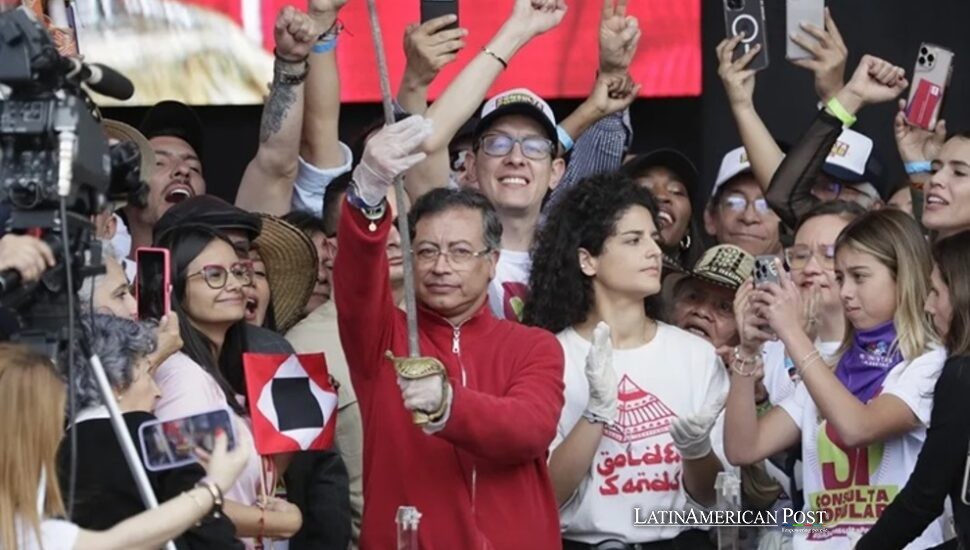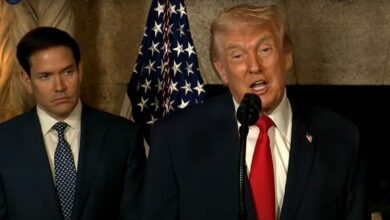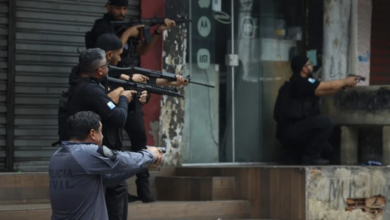Latin American Workers Mobilize on Primero de Mayo Labor Day

Labor Day on May first saw workers in the Americas gather in streets. They protested to gain better pay, dignity as well as renewed respect. Across places like Washington and Montevideo, chants for unity and justice became linked to political tensions. This highlighted both hopes plus frustrations in economies under pressure.
Outcries from North to South
In Washington, migrant workers, along with people who support them, gathered close to the White House. All laborers made a loud call for amnesty measures and respect. This protest gained energy from Hispanic activists. It featured honors for Latin American immigrants.
That had died in industrial accidents in the U.S. Meanwhile, in Argentina, the spotlight fell on former President Cristina Fernández de Kirchner, who took aim at the Javier Milei government’s allegedly “devastating” labor policies. She rallied the movement to protect salaries, which she said had reached historic lows.
In Chile, rallies across the Andes were more quiet, but they still had calls for support. With a government that wants changes, many locals asked for more pay as well as better work. In Peru, the biggest labor group spoke against longer hours at work – plus they spoke against efforts that hurt basic job rights. The CGTP demanded stricter enforcement of existing worker protections and an end to mass layoffs in under-regulated sectors.
Yet a glimmer of unity shone in Uruguay’s capital, where massive gatherings commemorated four decades of democracy while championing social welfare expansions. Union leaders urged further pay raises, the adoption of a 40-hour workweek, and urgent action against poverty. The government, though cautious about budget constraints, pledged to engage with the labor movement. “We’ll do everything possible to listen,” one official said.
Shifting Policies in Brazil and Mexico
Brazil’s President Luiz Inácio Lula da Silva underscored his ties to unions by hosting major labor chiefs on May Day and endorsing a sweeping set of demands: shorter workweeks, tax exemptions for lower incomes, and surcharges for the ultra-wealthy. The move delighted the Central Única dos Trabalhadores (CUT) but polarized conservative critics. A day earlier, Brazil’s labor minister had assured a crowd that “no one in government has forgotten the toils of everyday workers.” In a country still recovering from pandemic shocks, bridging the gap between rhetoric and reality remains a tall order.
Meanwhile, in Mexico, authorities used the holiday to publicize steps toward eventually implementing a 40-hour week. In its plan, President Claudia Sheinbaum’s government set a schedule. The schedule reaches to 2030. It understands that Mexican workers spend long hours at work. For that reason, gradual change is needed. From talks with large unions, this action arose. The intention is to change work rules – it will do so without causing business trouble. Some union leaders remain cautious, recalling past half-baked reforms that never reached full implementation. Still, for many employees, the mere promise of fewer hours and the chance at better work-life balance raised spirits.
Venezuela, where wages stagnate, saw smaller but defiant protests in Caracas. The government under Nicolás Maduro struggles to revive the economy. Pensioners demanded an immediate increase to their small $1.48 monthly minimum. Security forces watched them. The demonstration was peaceful. For instance, one protester said, “We stand for living wages, not token bonuses.” The protester mentioned a recent government plan. It would supplement meager salaries with stipends given occasionally. The discontent was like that of exiled opposition figures. They continue to describe Venezuelan labor conditions as bad.
Overarching Labor Demands, Fragmented Contexts
Across the region, the May Day mood was one of alternating optimism and anger. On the one hand, newly elected or re-elected administrations in countries like Chile and Colombia hold out progressive hopes for structural reforms. Gustavo Petro, from Colombia, obtained support from the public. Many workers marched to show they approved of his labor plans. Some wore T-shirts that said “A new time.” They believed Petro promised a referendum on employment matters that could help the working class.
On the other hand, the specter of mass dissatisfaction loomed large. Teachers’ strikes in Panama, landless worker movements in various parts of Brazil, and agricultural labor disputes in Guatemala all spotlighted simmering discontents that a single day of declarations cannot swiftly address. Indeed, for people on the margins—cane cutters, domestic workers, and day laborers—progress remains elusive. People marched. They held signs they had made themselves. They chanted for quick help with rising prices, job worries, and limited support from the government.
Voices spoke out against restrictions on union rights at various locations. For example, in Guatemala City, union members spoke against what they saw as scare tactics. They also expressed sadness about the killing of a union head. Similarly, Haitian diaspora groups in the U.S. used the moment to highlight the precarious conditions for Haitian seasonal laborers across various Latin American nations. “We can’t fix the system if we silence those who toil under it,” read one banner in Lima.
Policy hopes and action on the ground became clear – some came from lawmakers, others from unhappy groups. Across Latin America, economies still have trouble. They deal with recovery after the pandemic, limited money, also unstable politics. Unions see the moment ripe to push for transformative gains—like a region-wide shift to 40-hour weeks or standardized minimum wage hikes. Yet reality sets in: not all governments share the same fiscal capacity, political will, or ideological lens.
Also Read: Chile Tightens Border Policies, Concern Grows for Migrants
In Washington, immigrants chanted – in Montevideo, unions led parades. The day ended with different local views about what would happen with labor. A common link stayed present: throughout Latin America, May Day continues to provide a special space. It is a space for asking for correct pay, improving job conditions, and restoring respect at work. For many watchers, the demonstrations underscored a region in flux—where youthful democracies, economic constraints, and bold ideas converge into an ongoing debate over the shape of labor rights in an era of deep inequality and new possibilities.




